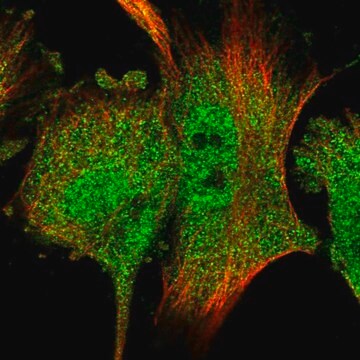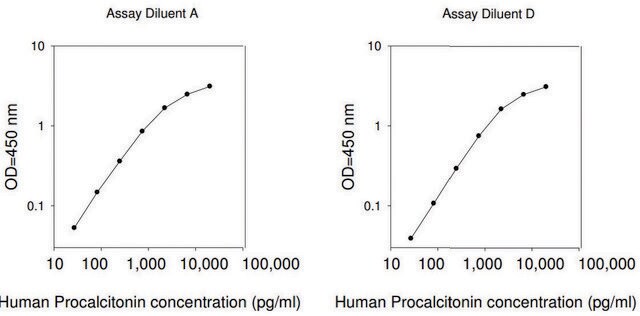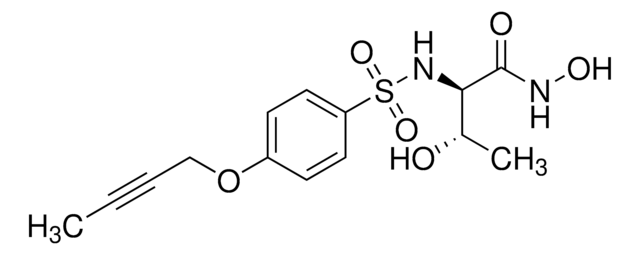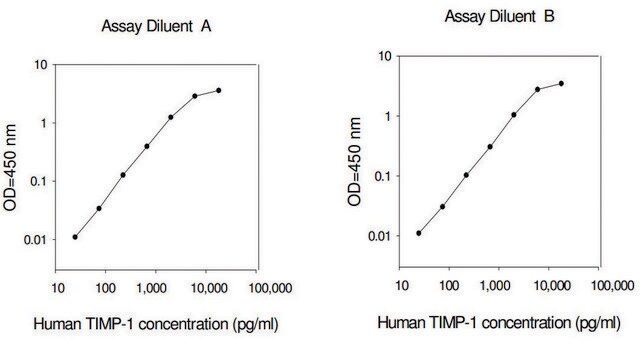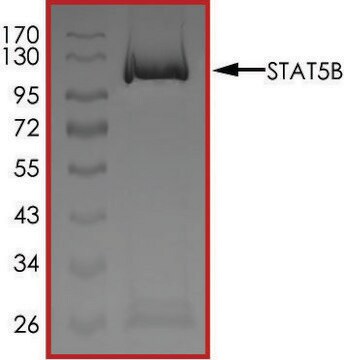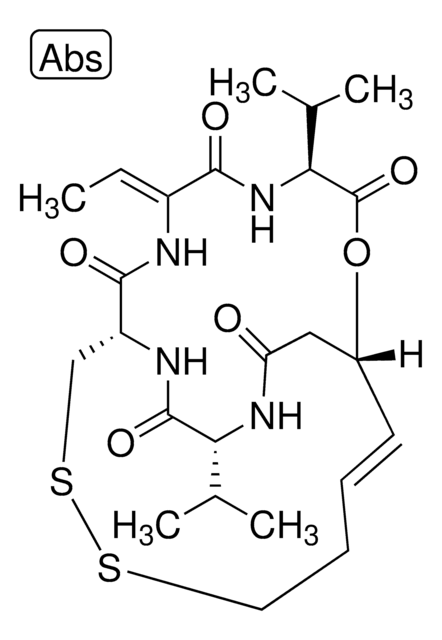R1905
Anti-RACK1 (N-terminal) in Kaninchen hergestellte Antikörper
IgG fraction of antiserum, buffered aqueous solution
Synonym(e):
Anti-GNB2L1, Anti-Gnb2-rs1, Anti-Guanine nucleotide binding protein (G protein), beta polypeptide 2-like 1, Anti-H12.3, Anti-HLC-7, Anti-Lung cancer oncogene 7, Anti-PIG21, Anti-Proliferation-inducing gene 21, Anti-Receptor of Activated Protein Kinase C1, Anti-protein homologous to chicken B complex protein
About This Item
Empfohlene Produkte
Biologische Quelle
rabbit
Konjugat
unconjugated
Antikörperform
IgG fraction of antiserum
Antikörper-Produkttyp
primary antibodies
Klon
polyclonal
Form
buffered aqueous solution
Mol-Gew.
antigen ~30 kDa
Speziesreaktivität
human, rat, mouse
Methode(n)
immunoprecipitation (IP): 5-10 μL using HEK-293T cell lysates
indirect immunofluorescence: 1:100-1:200 using paraformaldehyde-fixed HeLa cells
western blot: 1:500-1:1,000 using HEK-293T cell lystes
Versandbedingung
dry ice
Lagertemp.
−20°C
Posttranslationale Modifikation Target
unmodified
Angaben zum Gen
human ... GNB2L1(10399)
mouse ... Gnb2l1(14694)
rat ... Gnb2l1(83427)
Verwandte Kategorien
Allgemeine Beschreibung
Spezifität
Immunogen
Anwendung
Biochem./physiol. Wirkung
Physikalische Form
Haftungsausschluss
Sie haben nicht das passende Produkt gefunden?
Probieren Sie unser Produkt-Auswahlhilfe. aus.
Ähnliches Produkt
Lagerklassenschlüssel
10 - Combustible liquids
WGK
WGK 3
Flammpunkt (°F)
Not applicable
Flammpunkt (°C)
Not applicable
Persönliche Schutzausrüstung
Eyeshields, Gloves, multi-purpose combination respirator cartridge (US)
Analysenzertifikate (COA)
Suchen Sie nach Analysenzertifikate (COA), indem Sie die Lot-/Chargennummer des Produkts eingeben. Lot- und Chargennummern sind auf dem Produktetikett hinter den Wörtern ‘Lot’ oder ‘Batch’ (Lot oder Charge) zu finden.
Besitzen Sie dieses Produkt bereits?
In der Dokumentenbibliothek finden Sie die Dokumentation zu den Produkten, die Sie kürzlich erworben haben.
Unser Team von Wissenschaftlern verfügt über Erfahrung in allen Forschungsbereichen einschließlich Life Science, Materialwissenschaften, chemischer Synthese, Chromatographie, Analytik und vielen mehr..
Setzen Sie sich mit dem technischen Dienst in Verbindung.

